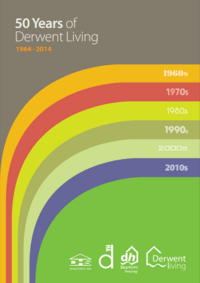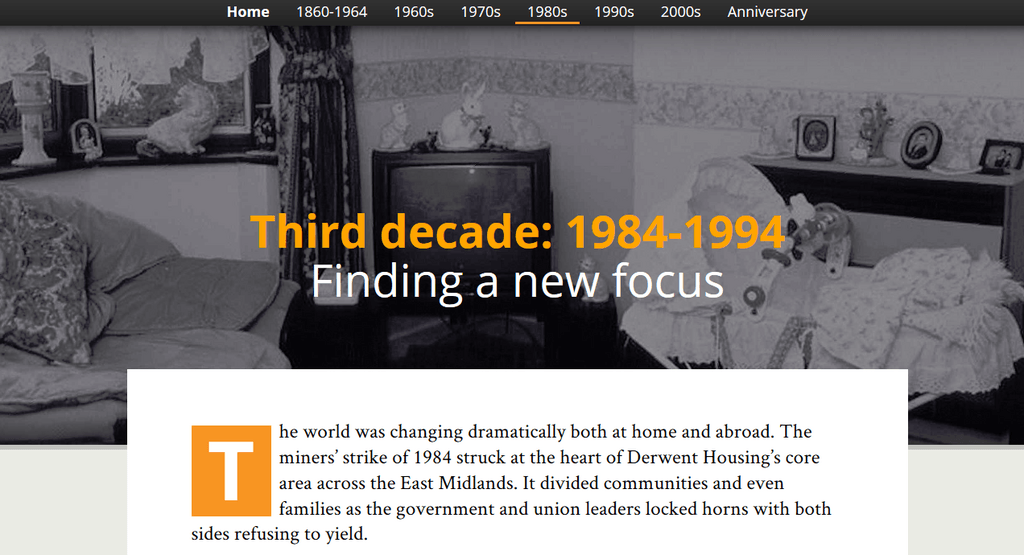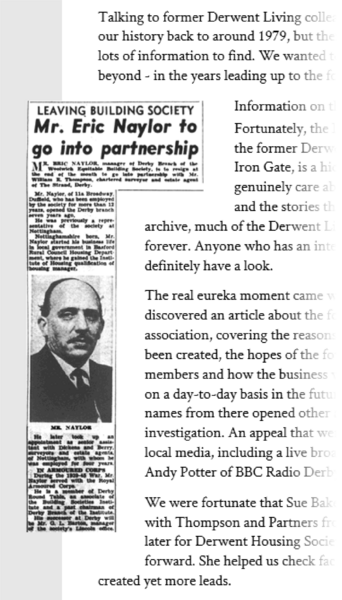Derwent Living at 50 (2014)
The website of the book of the film...

As Steve was busy writing the souvenir book and only had time for a brief outline for the site, I took on website duties. Time constraints meant that we had to get some outside help to complete the project, which was one of the biggest we'd undertaken - it encompassed the book, website, documentary, printed collateral, displays for the premiere at a theatre in Derby... RizkMcCay designed the look of the book, which informed some of the home page design, and our research had been augmented by Cartwright Communications to add background information on the decades covered by the book.
The site built on ideas we'd learnt from building the intranet, and as a testing ground for some of the ideas we were thinking of for the future. It was built to be a "flat" site, with just a few static pages, but in reality it was mostly written in the intranet CMS, the content generated from that dropped into a file, and then standard header and footers added by code. This meant that I could experiment with social media sharing data, hero images that optimised themselves, and a persistent navigation bar without having to go back and change every page if I needed to change anything.


Steve had liked the idea of the white text area clipping up into the hero image at the top (z-index and negative margin fun!), and I ran with that to get illustrative images to clip out of the sides. Then I had to go back and re-do them all as I'd forgotten to add captions. Oops. We wanted the site to look great on any device, so plenty of time was spent finessing the media queries to make it fully responsive.
The book was made up of bite-sized layouts jumping between historical context of the decade, what the company achieved in those years, and pop culture elements to compare life then and now. As the site was supposed to be a simpler, more streamlined few pages (and not a 93 page thread-sown epic) I went back to the research and composed a more linear narrative, and then set about trying to find photographs to illustrate it. Easier for later years, not so much nearer the company's inception.